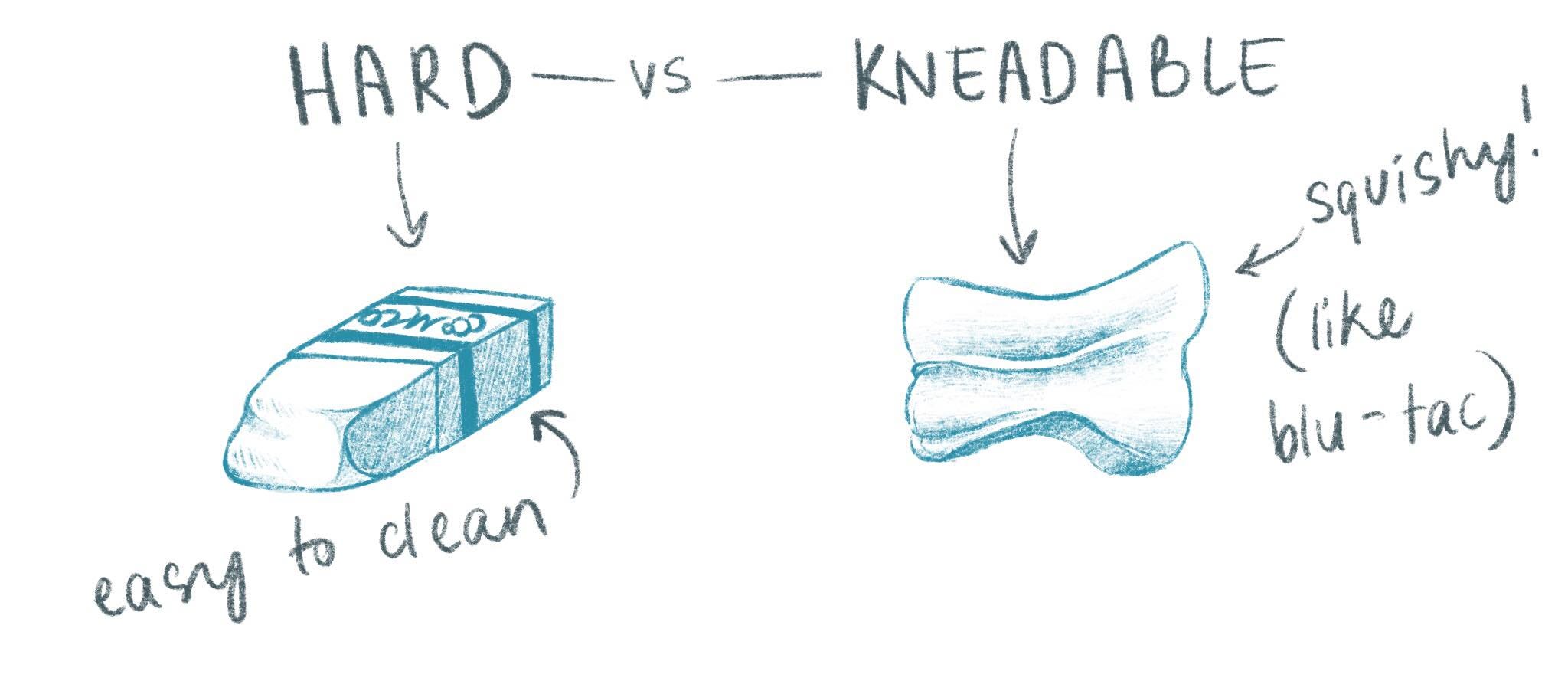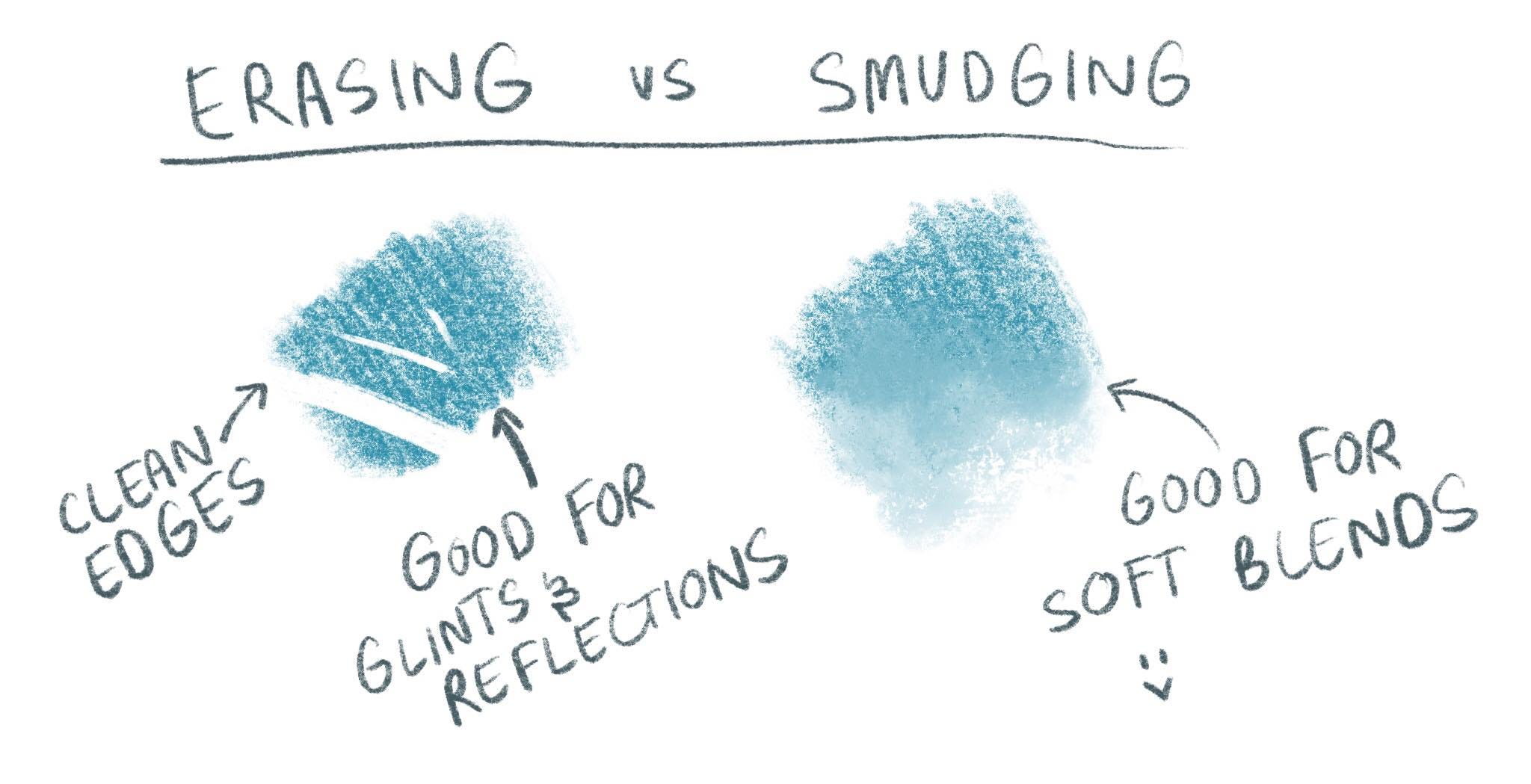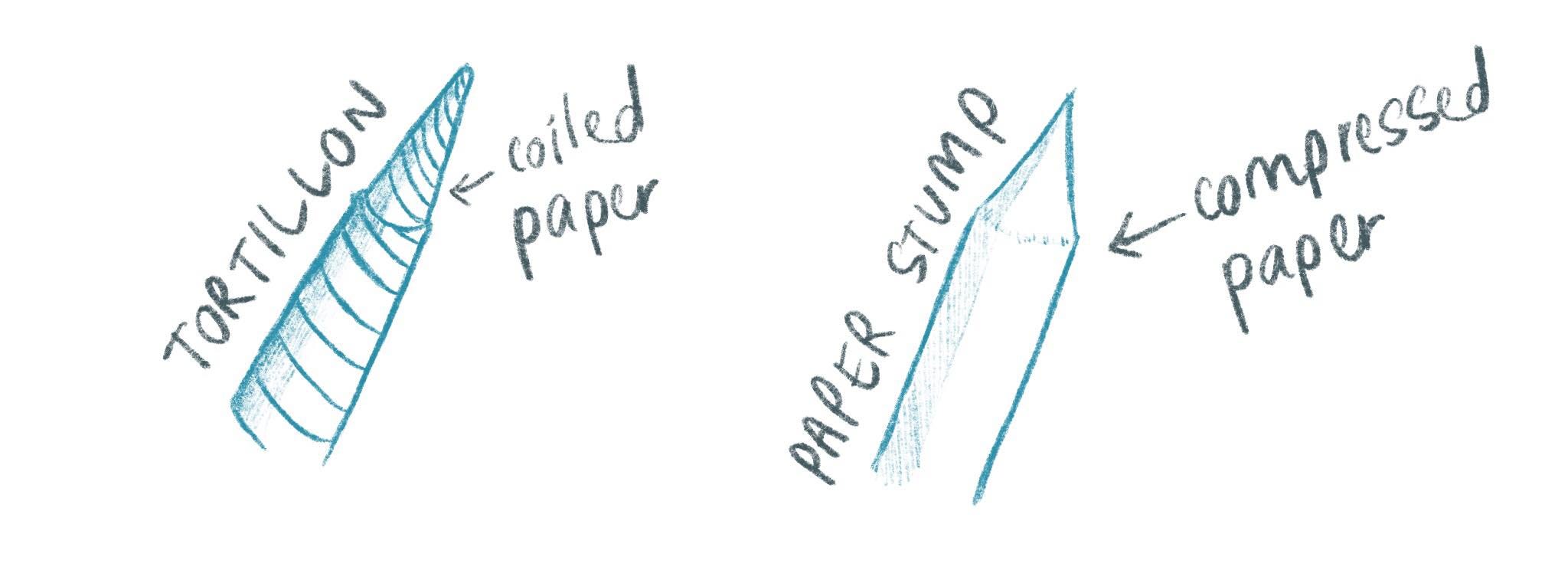Hello! This is a guide on coloured pencils. This is meant to only be about the art materials and won’t include any drawing or shading tips. This will also be specifically about coloured pencils as I’ve already written an article on graphite pencils.
What Is A Coloured Pencil, Anyway?

Coloured pencils are composed of fillers, binders, pigment and water. Pigment is the colour of the pencil, binders hold everything together and fillers (aka extenders) bulk the mixture up.
Types of Coloured Pencil

There are a few different types, so to make it easier we’ll compare them like this:
- Student vs. artist quality
- Wax vs. oil based
- Colour vs. watercolour
While pastel pencils are technically also a type of coloured pencil, I won’t go through them in this article since I think they make more sense to be grouped with other types of pastel (their medium) rather than pencils (their shape).
Student vs. Artist Quality
Pigment
Artist quality pencils have higher quality pigment and more of it. The pigments also tend to be uniform across artist quality pencil lines so you can colour match different media together (for example, the artists’ watercolour and non-watercolour pencil lines in Faber-Castell are colour matched).
Lightfastness
Lightfastness is the measure of how resistant something is to UV rays — in other words, how long something can last in sunlight before fading. This is important for artists who intend to sell their work, as lightfast materials will last longer than materials that aren’t lightfast. Artist pencils are tested for lightfastness and some are even marked with their lightfast ratings (for example, Faber-Castell’s Polychromos range has a star rating printed on each pencil).

Durability
Artist quality pencils have thicker cores, which means they’re both more durable and easier to shade larger spaces with. Their cores have also been formulated to be more break and water resistant than student pencils.
Range
Artist pencils come in a wider variety of colours (student quality pencils tend to range from 36–48 colours, while artist pencils can come in 120+ colours). You can also test artist pencils in store before you buy them, and individual colours are available so you don’t have to buy a whole new pack every time you run out of one colour.
Binder
Student pencils are generally wax-based, while with artist pencils you have the option of oil or wax-based pencils.
Wax vs. Oil-based
Coloured pencils will have either a wax-based or oil-based binder. Binders hold all of the ingredients of the pencil core together, make the colours waterproof and give them a smooth consistency. While a lot of artists will have personal preferences, there isn’t one that’s inherently better than the other — rather, they’re different and are generally used for completely different art styles.
- Wax pencils are softer and have a creamier blend, but their softness also means they break more easily than oil-based pencils
- Oil pencils keep a fine point very well and are great for detail work
- Over time, the components of a drawing done with a wax pencil can separate, causing the wax to “float” to the surface of the picture. This results in a cloudy white appearance known as “wax bloom”. You can get rid of this by gently rubbing with a tissue, but you do run the risk of smearing the picture. Oil pencils don’t have this problem.
- Wax pencils are more suitable for art styles that use burnishing (where you rub the pencil into the grain of the paper, making it smooth and shiny), while oil pencils are more suitable for textural styles of drawing.

- Wax pencils tend to be more immediately vibrant, but you can layer more with oil pencils.
- You can blend wax pencils with a colourless blender (a pencil with a clear wax core).
- You can “paint” with oil pencils in a similar way to watercolour pencils by using an oil or solvent to dissolve the oil binder.
Note: As far as I know, the general favourite for wax-based artist pencils is Prismacolor, while the favourite for oil-based pencils is the Polychromos range.
Colour vs. Watercolour
- Generally, you can paint with watercolours and you can’t paint with normal coloured pencils (oil-based pencils can break this rule if you paint an oil or solvent over them).
- Watercolours are less vibrant, don’t layer as well and can’t be burnished
- Watercolours have a water-soluble binder (meaning their binder dissolves on contact with water). This means that as well as painting with them, you can use water to lighten the picture by moistening parts of the picture then dabbing to soak up the water and loosened pigment.
Accessories
Note: If you’ve already read my article on graphite pencils, many of these accessories will be the same, so you can just scroll past the accessories section over to the tips section.
Paper
Just like with graphite pencils, you’ll want to use a cartridge paper that’s at least slightly textured. The thicker the paper, the more layers and abuse it’ll be able to take from burnishing.
Paper thickness is measured by gsm (grams per square metre). This actually refers to the weight of the paper, but the heavier a paper is, the thicker it is. Standard writing paper is about 80gsm, drawing/sketching paper is about 120–150gsm and watercolour paper (which you can use w/c pencils on) ranges from 150–640gsm.
Erasers

Hard erasers are for clean and thorough erasing, but can tear the paper. These also come in a “lead” shape for precise erasing. Kneadable erasers are for smudging and blending rather than actual erasing. These can be pulled apart and moulded into different shapes for versatility and convenience.

If you press softly, hard erasers can be used to smudge as well. The sharp edges are better for creating small spaces like glints and highlights.
Smudging Tools

There are plenty of materials you can use to improvise here (like tissues, makeup brushes, cotton buds and soft cloth). For dedicated tools that help with smooth blending in detailed areas, you can use tortillons and paper stumps. Tortillons are a tightly wrapped coil of paper where you peel off a layer when the tip is dirty or blunt. Paper stumps are sticks of solid paper that are pointed on both ends. They’re good for detailed blending and are available in different widths.
Extenders
A little handle that you can slot a pencil stump into, making it easier to grip.

Tips
- Make a swatch page for colours when you buy a new pack of pencils. This means you have a colour reference that’s more accurate than the barrel colour of the pencil

- If you’re new to buying artist pencils, buy just a few colours from a few brands and lines to start with. This lets you try out a bit of everything without committing to entire packs.
- You can mix oil and wax pencils, student and artist pencils and watercolour and non-watercolour pencils.
That’s It!
Good luck with your drawing adventures! I’ll be making a few other art-related guides in a series (watercolour, learning pathways, digital art, shading techniques, etc) so leave a comment if there’s a particular art thing you’d like me to write about :)
